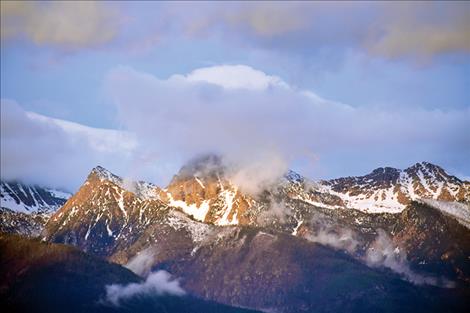Wildfire outlook: low snowpack, higher temperatures predicted
Hey savvy news reader! Thanks for choosing local.
You are now reading
2 of 3 free articles.
LAKE COUNTY — It’s starting to feel like summer in Montana – the weather is warm and skies have been smoky.
This spring, some early season smoke in the area came from local prescribed burns intended to reduce flammable materials in forests. Fire Prevention Specialist C.T. Camel said the CSKT Division of Fire has burned 3,584 acres in its 23 prescribed burns in Fiscal Year 2019.
“We’re using fire ecology to try to get our forests back to pre-European days when fire was used to clear out vegetation,” Camel said. “We do a prescribed burn to get rid of dead vegetation.”
In addition to smoke from prescribed burns, late May brought smoke from a 500,000-acre Alberta wildfire to Lake County’s skies.
According to Camel, any smoke you see for the rest of the summer will be from a real wildfire – the window of weather for controlled fuel-reduction burning is over. The fuels management department only performs prescribed burns at optimal temperature, relative humidity, and wind conditions.
According to CSKT Hydrologist Casey Ryan, snowpack in the mountains was about 10 percent less than normal last winter, which means there’s less moisture available to prevent wildfires in the valley. To date, there’s just a bit of snowpack left to melt at high elevations.
According to Ryan, factors that have the biggest influence on the outcome of a wildfire season are fairly unpredictable. “It’s going to come down to weather and it’s going to come down to people,” Ryan said.
Weather has a significant impact on wildfire activity. According to Camel and Ryan, weather models predict above normal temperatures this summer. High temperatures often lead to more fire activity. The models anticipate equal chance of above and below average precipitation.
Significant precipitation in June could prevent fires later in the summer. However, Camel said, “It’s a double-edged sword. If we do get precipitation, the vegetation is going to grow and then cure in July and August.”
Late summer thunderstorms can ignite fires, but Ryan said it’s hard to predict how many of those storms will occur. He added that recent changes in the climate of the area have influenced wildfire patterns. The summers of 2015-18 were the four warmest years on record in western Montana. Snow is melting off earlier than average as well. This trend means fire seasons are getting more intense. “Weather is that one factor that we really can’t control and can have a huge impact on how severe and how long wildfire season is,” Ryan said.
Human activity is another a big cause of wildfires. Camel advised caution with fire no matter what the weather conditions are. “You always want to be safe with fire,” he said. Until June 30 anyone can burn fields or yard debris with a permit. Permits are available at CSKT.org. After June 30, burning will be put on hold until danger of wildfires is reduced. Camel urges recreationists to be careful with activities that could start fires.
















